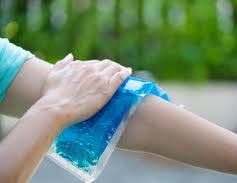The use of ice for injuries, often referred to as the R.I.C.E. method (Rest, Ice, Compression, Elevation), has been widely recommended for decades. However, recent research and expert opinions challenge the effectiveness of icing injuries, especially for promoting recovery. Here’s what we currently understand:
Why Ice Might Not Be Ideal for Recovery:
1. Inflammation is Part of Healing:
• Inflammation is the body’s natural response to injury. It delivers nutrients, oxygen, and immune cells to the damaged area for repair. Icing reduces blood flow and suppresses this response, potentially delaying the healing process.
2. Impaired Cellular Repair:
• Cooling tissues can interfere with the activity of cells responsible for repairing the injury, like macrophages and fibroblasts.
3. Temporary Pain Relief, Not Long-Term Benefit:
• Ice can numb the area and reduce pain temporarily, but it doesn’t necessarily address the root cause or enhance recovery.
4. Slowed Metabolic Processes:
• Icing lowers tissue temperature, which can slow down the metabolic processes needed for tissue repair.
Emerging Alternatives:
• Active Recovery: Gentle movement or activity to improve blood flow can enhance healing without overloading the injured area.
• Heat Therapy: In some cases, heat may help improve circulation and relax tight muscles.
• Optimal Loading: Gradually introducing controlled stress to the injured area helps promote tissue remodelling and strength.
Exceptions:
• In the acute phase (immediately after injury), ice might help reduce severe swelling or provide short-term pain relief but may delay recovery process!
The shift in perspective has gained traction, but it’s essential to consult with a healthcare professional for advice tailored to the specific injury and individual needs.
Research….
Recent research has prompted a re-evaluation of the traditional use of ice, or cryotherapy, in treating acute injuries. While ice has been commonly applied to reduce pain and swelling, studies suggest it may impede the natural healing process.
Key Findings:
• Delayed Healing: Applying ice can delay recovery by reducing blood flow and slowing the inflammatory response essential for healing. Dr. Gabe Mirkin, who coined the R.I.C.E. protocol in 1978, retracted his support for icing injuries in 2015, acknowledging that it might hinder the healing process.
• Pain Reduction Without Healing Benefits: Cryotherapy primarily offers short-term pain relief without significantly enhancing tissue repair. Research indicates that while ice reduces pain following injury or exercise-induced soreness, it does not necessarily improve recovery outcomes.
• Potential Negative Effects: Some studies suggest that excessive cooling may delay muscle repair and increase scarring. Animal models have shown that extreme muscle cooling might delay repair and increase muscle scarring, raising concerns about the overuse of cryotherapy.
Alternative Approaches:
• Active Recovery: Engaging in gentle movements can promote blood circulation and support healing without the adverse effects associated with ice.
• Heat Therapy: Applying heat may aid in muscle relaxation and increase blood flow, potentially facilitating recovery.
• Optimal Loading: Gradually reintroducing activity to the injured area can encourage tissue remodelling and strength development.
In light of these findings, healthcare professionals are reconsidering the routine use of ice for injury treatment. It’s advisable to consult with a medical professional to determine the most appropriate treatment strategy for individual injuries.





I agree, heat does wonders for my body and overall health. Ice packs, and just being cold in general, seem to make everything more achy and stiff for longer.
That's so interesting! I've always preferred a hot water bottle to an ice pack !